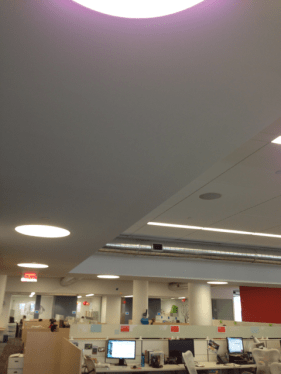The iPhone 5 camera’s occasional tendency to capture purple flares has been a topic of discussion among users and critics alike. While it is not an issue exclusive to Apple’s latest handheld, the company has finally provided an official response to the problem.
Apple’s Advice for Minimizing Purple Flaring
According to Apple, moving the camera slightly to change the position at which the bright light is entering the lens or shielding the lens with your hand should minimize or eliminate the effect. This advice may seem simple, but it highlights the underlying issue causing the purple flaring.
The Root Cause of Purple Flaring: Reflections Inside the Camera Module
Contrary to initial speculation that the issue was related to the iPhone 5’s new lens or a change in how the camera sensor handles noise, Apple has revealed that light entering the camera at an angle can cause a reflection off the surfaces inside the camera module and onto the camera sensor. This phenomenon is more complex than initially thought and requires a more nuanced explanation.
A Brief History of Advice from Apple
In recent days, some users have been seeking a quick software fix to address the issue. However, it seems that this solution is unlikely in the near future. Recall that earlier this week, an iPhone 5 user named Matt Van Gastel received an email response from Apple recommending that he angle the camera away from bright light sources when snapping photos.
This new advice echoes the company’s previous recommendation to hold iPhone 4s differently in the wake of 2010’s Antennagate situation. While it may seem like a trivial matter, purple flaring can be frustrating for users who want to capture high-quality images with their smartphone cameras.
Comparing Apple’s Response to Previous Issues
In some ways, this response from Apple reminds us of the company’s approach to addressing past issues, such as Antennagate. In both cases, the solution seems simple: change your behavior or adjust your expectations. While it may not be the most satisfying answer for users who want a more technical explanation or a quick fix, it highlights the importance of understanding the underlying causes of these issues.
Conclusion
The iPhone 5 camera’s purple flaring issue has sparked a lot of debate and discussion among tech enthusiasts and critics alike. Apple’s official response provides valuable insight into the root cause of this problem and offers practical advice for minimizing its effects. Whether or not users are satisfied with this solution remains to be seen, but it’s clear that Apple is committed to addressing these issues and improving the overall user experience.
Recommendations
If you’re an iPhone 5 user who has experienced purple flaring, we recommend trying Apple’s suggested remedies:
- Move the camera slightly to change the position at which the bright light is entering the lens
- Shield the lens with your hand
These simple adjustments may help minimize or eliminate the effect of purple flaring.
Additional Tips for Improving iPhone 5 Camera Performance
In addition to following Apple’s advice, here are some additional tips for improving your iPhone 5 camera performance:
- Use the HDR feature: This feature can help reduce overexposure and enhance image quality
- Adjust exposure compensation: Experiment with adjusting exposure compensation to find the optimal setting for different lighting conditions
- Clean the lens regularly: Regularly clean the lens to ensure optimal image quality
By following these tips and Apple’s recommended solutions, you may be able to improve your iPhone 5 camera performance and reduce the occurrence of purple flaring.
Final Thoughts
The iPhone 5 camera’s purple flaring issue is a reminder that smartphone cameras are still evolving and improving. While it may seem like a minor problem, it highlights the importance of understanding the underlying causes of these issues and providing practical solutions for users.
As we move forward with future smartphone releases, let’s hope that manufacturers will prioritize image quality and continue to innovate in this area.



